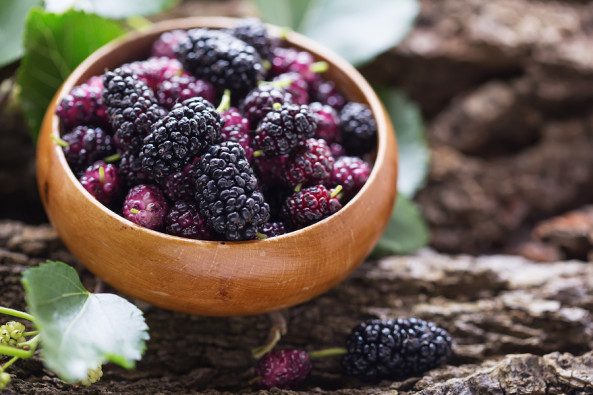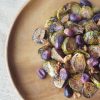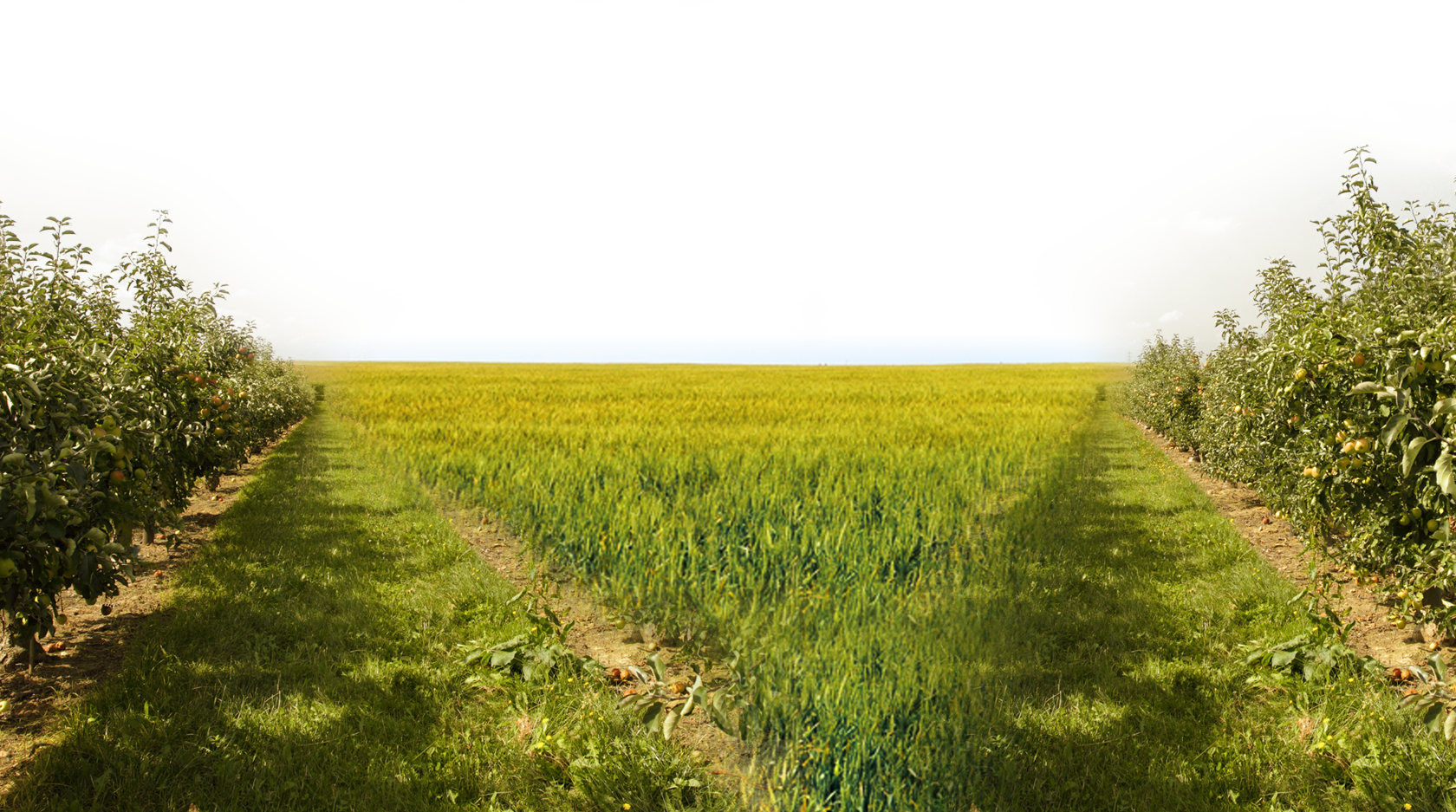
Mulberries: An amazing superfood with folk-medicine-legend status
By Linda Bonvie | 0 Comments | Posted 04/08/2015
For most folks, their first contact with the mulberry came via a child’s rhyme. However, mulberry trees, not bushes, have long been a serious player on the folk medicine and natural nutrition fronts, along with a mainstay of the Far East silk industry.
Indigenous to China, the leaves of the fast-growing mulberry plant were an essential food for silkworms and the related industry.
One of the first mass plantings of mulberry trees in North America took place in 1733, when Englishman James Oglethorpe imported 500 white mulberry trees into Georgia in hopes of encouraging silk production in the then-British colony of Georgia.
The Chinese medicine realm saw far more than just leaves in the mulberry. According to the Institute for Traditional Medicine, the mulberry fruit became a medicinal agent to nourish the yin and blood, benefit the kidneys, and treat weakness, fatigue, anemia, and premature graying of hair. Other used in Far East medicine included the treatment of urinary incontinence, tinnitus, dizziness, and constipation in the elderly and the anemic.
As the mulberry plant was introduced worldwide, its silkworm-feeding assets rapidly gave way to the plant’s naturopathic merits, shade-tree qualities, and highly nutritious fruits.
In recent years, the mulberry fruit has acquired superfood status among many naturopaths. Its flavor has been described at nuts.com, as having a naturally sweet taste that is similar to goji berries and dried figs
While the fresh fruit is seldom marketed due to it delicate nature and short shelf-life, dried mulberries can now be commonly found on grocery shelves. Also, mulberry trees have become a big seller among tree nurseries. Mulberry trees not only grow rapidly but quickly produce copious amounts of fruit.
On the nutrient front, mulberries host impressive quantities of iron, calcium, Vitamin A, C, E and K, folate, thiamine, pyridoxine and niacin. The fruit is also rich in polynutrients like anthocyanin, flavonoids, lutein and zea-xanthin.
As a wellness bonus, mulberries are rich in resveratrol, an antioxidant linked to heart health. Resveratrol is also being touted as a possible anti-aging agent. According to a study being conducted by David Sinclair of Harvard Medical School, “Resveratrol appears to help increase the activity of mitochondria, which produces energy within cells, potentially extending their lives.”
Adding to the mulberry’s nutritional values is its unusually high protein content, something rarely found in fruits.
Some uses for dried mulberries, as suggested at this web site, include adding them into baked granola, oatmeal or the batter for scones, cookies and energy bars. (A mulberry-flavored cordial can also be created by infusing them in a bottle of vodka or gin,)
But my favorite way of eating dried mulberries is right out of the bag!


 Contact us
Contact us



























